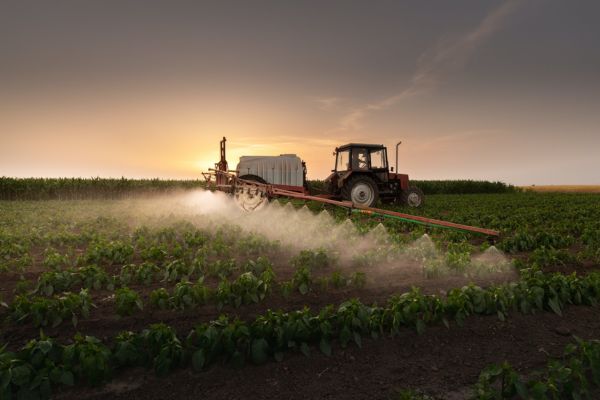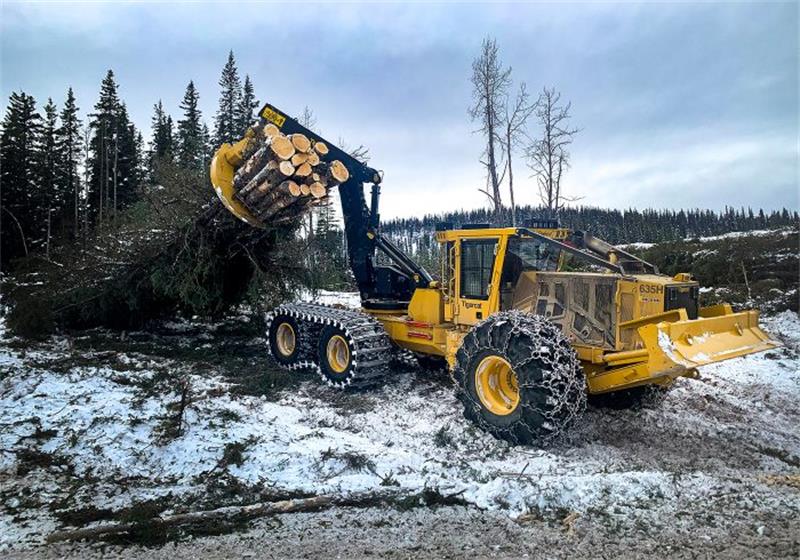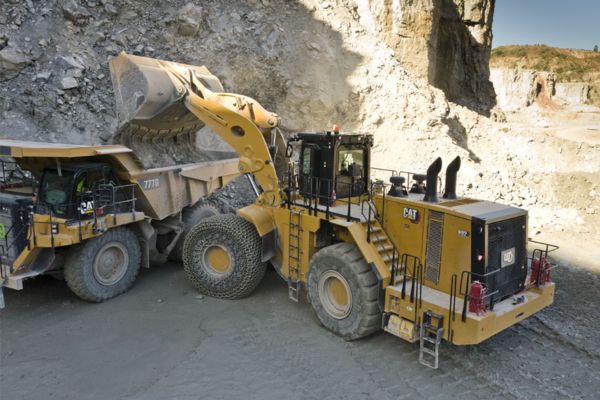Field-attachable, or reusable hydraulic fittings are essential for any application where immediate, on-site hose repair is critical. Industries like agriculture, logging, mining, and marine services rely on them to fix equipment in remote locations using only basic hand tools, minimizing costly downtime.
For years, we at Topa have supplied both permanent crimp fittings and reusable field-attachable fittings. While crimp fittings are perfect for the controlled environment of a workshop, the value of a reusable fitting becomes clear the moment a machine breaks down miles from anywhere. It is not just a component; it’s an insurance policy against lost time. Understanding which applications benefit most from this technology will help you be better prepared for the unexpected.
Why Are Field-Installable Fittings Vital for Farmers?
A harvester’s hydraulic line bursts during a critical harvest window. Every hour of delay means lost crops and lost income. Waiting for a mobile mechanic is not a viable option.
Reusable fittings are vital for farmers because they allow for immediate hose repairs on tractors, combines, and balers right in the field. This capability eliminates long trips to a repair shop and minimizes downtime during time-sensitive planting or harvesting seasons.

The High Cost of Agricultural Downtime
In farming, timing is everything. A delay of a single day can have a huge impact.
- Harvesting: If a storm is approaching, a day of downtime can mean the difference between a successful harvest and a total loss.
- Planting: Missing the ideal planting window due to equipment failure can reduce crop yields significantly.
- Spraying: Timely application of fertilizers or pesticides is critical for crop health. A broken hose on a sprayer can disrupt this schedule.
Field-installable fittings directly combat this by dramatically reducing the Mean Time To Repair (MTTR).
Simplicity for the Self-Sufficient User
Farmers are famously resourceful and often perform their own machinery maintenance. Reusable hydraulic fittings are designed for exactly this type of user. The assembly process does not require complicated, heavy, or expensive machinery. All that is needed are basic hand tools that are already in the farm workshop or service truck.
Common Agricultural Applications
These fittings are used on nearly every piece of hydraulically powered farm equipment. This versatility makes them an essential part of any farm’s spare parts inventory.
| Equipment | Common Hydraulic Functions |
| Tractors | Power steering, three-point hitch, front-end loader |
| Combines | Header lift, reel drive, unloading auger |
| Balers | Tensioning arms, bale ejection, pickup lift |
| Sprayers | Boom folding and lifting, wheel motors |
How Do They Keep Logging Operations Running?
Deep in a forest, a feller buncher’s hydraulic line is severed. The entire crew is forced to stop working. Every hour of inactivity costs the company thousands of dollars in lost productivity.
In the logging industry, field-attachable hydraulic fittings are essential for emergency on-site repairs of heavy machinery like skidders and harvesters. The remote and rugged work environment makes accessing a workshop impossible, so fast field repairs are the only way to maintain operational uptime.

Forestry operations take place far from civilization. A service road might be the only link to the outside world. When a critical piece of equipment fails here, you cannot just call a tow truck. The ability to create a new hose assembly on the tailgate of a pickup truck is what keeps the entire operation from grinding to a halt. This makes reusable fittings a core component of any logging company’s maintenance strategy.
Surviving Extreme and Remote Environments
Logging sites are among the harshest workplaces on earth.
- Remoteness: Operations are often dozens or even hundreds of miles from the nearest town or repair facility.
- Terrain: Steep slopes, mud, and dense forest make it difficult and time-consuming for specialized repair vehicles to get to the site.
- Debris: Falling branches and rocks are a constant threat to hydraulic hoses, making failures a common occurrence.
A Comparison of Repair Options
| Repair Method | Required Equipment | Cost Impact |
| Field-Installable Fitting | Hand tools, spare hose/fittings | Minimal downtime, very low cost |
| Mobile Repair Service | Specialized service truck | High service fees, significant lost production |
| Transport to Workshop | Lowboy trailer, transport logistics | Catastrophic cost, multiple days of lost production |
What Role Do They Play in Remote Mining?
An underground rock drill suffers a hydraulic failure, halting a critical part of the mining process. Evacuating the machine for repair is a slow and expensive logistical nightmare.
In remote mining, field-attachable fittings are used for rapid, in-place repairs of hydraulic systems on drills, loaders, and haul trucks. This capability is crucial both in open-pit and underground mines where equipment accessibility is limited and production quotas are strict.

The scale of a mining operation is immense. The equipment is massive, and the cost of downtime is astronomical. Mines often operate 24/7 in some of the most isolated locations in the world. Being able to quickly fix a hydraulic line without moving a 200-ton haul truck or a complex drilling rig is not just a convenience; it’s a core operational necessity.
The Challenge of Equipment Scale and Access
The sheer size of mining equipment makes repairs difficult.
- Open-Pit Mines: While accessible, moving giant shovels or trucks to a central workshop is a major, time-consuming task that halts production.
- Underground Mines: Space is extremely tight. It can be physically impossible to bring large repair equipment to the machine. Repairs must be done with portable tools.
Meeting Strict Production and Safety Standards
Mines run on tight schedules with ambitious production targets. Any unscheduled stop can have a ripple effect across the entire operation. Furthermore, safety is the highest priority, especially underground. A hydraulic leak is not just a mechanical problem; it’s a source of flammable fluid and a slip hazard. The ability to quickly and reliably seal a leak is essential for maintaining a safe working environment.
Can Construction Sites Benefit from Using Them?
On a busy construction site, a hydraulic hose on an excavator bursts, stopping all earth-moving work. The project is on a tight deadline, and this delay puts the entire schedule at risk.
Yes, construction sites benefit greatly from field-attachable fittings. They enable contractors to perform fast on-site repairs for excavators, loaders, and cranes. This minimizes downtime and helps keep projects on schedule and within budget, avoiding penalties for delays.

While a construction site might be in a city, it is still an isolated work zone. Getting a machine to a workshop or waiting for a specialized mobile service can still take hours—hours that a project manager simply does not have. Having a kit of reusable fittings allows the on-site mechanic or operator to solve the problem immediately and keep the project moving forward.
The Domino Effect of Downtime
On a construction project, many tasks are sequential. If the excavator stops working, the trucks that haul away the dirt also stop. The crew that lays the foundation stops. This chain reaction of inactivity can be incredibly costly. A one-hour repair with a reusable fitting prevents these cascading delays.
Managing a Diverse Fleet of Equipment
A general contractor might own or rent equipment from many different brands. Each machine can have different hose length and fitting requirements.
- Flexibility: Reusable fittings provide the flexibility to handle any repair need without having to stock hundreds of unique pre-made hoses.
- Cost Control: They reduce reliance on expensive third-party repair services and minimize rental costs for replacement equipment.
Key Applications on a Construction Site
- Excavators: Boom, stick, and bucket cylinder lines.
- Wheel Loaders: Lift and tilt functions, steering.
- Bulldozers: Blade lift and angle cylinders.
- Cranes: Outrigger and boom extension hydraulics.
Are They a Necessity for Marine and Offshore Work?
Miles out at sea, a fishing trawler’s winch hydraulics fail. The boat is dead in the water, unable to haul in its catch. Returning to port means losing valuable time and fuel.
Field-installable fittings are an absolute necessity in marine and offshore applications. On ships, fishing boats, and oil rigs, there is no option for external support. The ability to perform self-sufficient hydraulic repairs is critical for the safety, operation, and viability of the vessel.

The Ultimate Remote Location
There is no more isolated workplace than a vessel at sea.
- No Rescue: You cannot call for a simple repair truck. Assistance can be days away.
- Operational Integrity: A failure in a key system like steering or a crane can render a vessel helpless or unable to complete its mission.
- Corrosive Environment: The saltwater environment is highly corrosive. Using stainless steel reusable fittings is often necessary to ensure longevity and reliable seals.
Critical Marine Systems Relying on Hydraulics
- Steering Systems: Essential for vessel control and safety.
- Winches and Cranes: Used for anchoring, mooring, and cargo or fishing net handling.
- Hatch Covers and Ramps: Critical for cargo access and vessel watertightness.
- Stabilizer Fins: Provide stability in rough seas, crucial for both safety and crew comfort.
A failure in any of these systems can have serious consequences, making the ability to perform an immediate repair paramount.
How Do They Support Mobile Repair Businesses?
A mobile mechanic gets a call for a burst hydraulic hose. They need a solution that is versatile enough to fix any type of machine without carrying a massive, expensive crimper in their truck.
Field-installable fittings are the backbone of many mobile hydraulic repair businesses. They allow a technician to offer on-site hose assembly services with a minimal investment in equipment and a compact inventory of bulk hose and fittings in their service vehicle.

The Mobile Workshop Advantage
- Low Initial Investment: Avoids the huge upfront cost of a hydraulic crimping machine.
- Space Efficiency: Bulk hose and bins of fittings take up far less space than an inventory of pre-made hoses or a large crimper.
- Total Versatility: The mechanic can build a hose of any length with any combination of fitting ends right on the customer’s site. This means they can always solve the problem in a single visit.
Providing Value to the Customer
A mobile repair business built around reusable fittings sells speed and convenience. The value proposition is not just fixing the hose, but drastically reducing the customer’s downtime. The ability to show up and create a custom hose assembly in minutes is a powerful service that customers in agriculture, construction, and other industries are willing to pay a premium for. This level of responsiveness builds a loyal customer base.
Conclusion
Field-installable fittings are crucial for any industry where equipment downtime in remote locations is unacceptable. They provide the power of immediate, on-site repair, ensuring productivity and safety.
At Topa, we know every minute of downtime costs you money. That’s why we provide high-quality hydraulic fittings and hoses designed for durability, fast delivery, and easy installation. Whether you need standard or reusable fittings, we can supply the right solution to keep your equipment running without interruption. Contact Topa today to get a quick quote and place your order with confidence.
FAQ
What tools do I need to install reusable fittings in the field?
Basic hand tools (wrenches, vise, hose cutter), light lubricant, and a clean workspace.
Which hoses work with field-attachable fittings?
Only the hose types/standards specified by the fitting maker (e.g., SAE 100R1/R2 for the matching series). Check the catalog.
Are reusable fittings as strong as crimped fittings?
They’re reliable for rated applications but crimped fittings are preferred for extreme duty, high volume, or OEM production lines.
When should I NOT use a reusable fitting?
In very high-pressure, high-temperature, or high-impulse systems, or where space/access prevents proper assembly and inspection.
How much inventory should a field kit carry?
A mix of common hose sizes, straight/45°/90° ends, adapters, ORFS/JIC/NPT options, and spare seals/O-rings to cover most breakdowns.
Do reusable fittings need periodic checks?
Yes—inspect after the first few hours of operation, then on routine intervals for tightness, leaks, abrasion, and seal condition.





